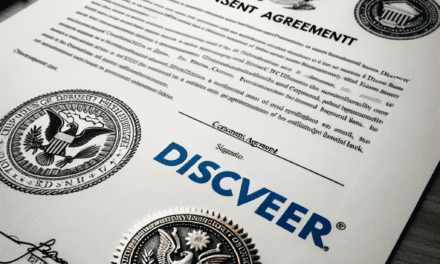“Streamlining for Stability: Navigating Crisis with Strategic Downsizing”
Introduction
Boeing’s CEO has embarked on a strategic initiative focused on downsizing as a means to stabilize the company amid ongoing crises. This approach aims to streamline operations, reduce costs, and enhance efficiency in response to the significant challenges Boeing has faced, including production setbacks, financial losses, and reputational damage. By implementing a leaner organizational structure, the CEO seeks to position Boeing for long-term sustainability and competitiveness in the aerospace industry. This strategy involves difficult decisions, including workforce reductions and restructuring efforts, but is deemed necessary to restore the company’s financial health and operational resilience.
Understanding Boeing’s Downsizing Strategy: A Path to Stability
In recent years, Boeing has faced a series of unprecedented challenges that have significantly impacted its position as a leader in the aerospace industry. The company has been grappling with the aftermath of the 737 Max crisis, compounded by the global pandemic’s effects on air travel demand. In response to these challenges, Boeing’s CEO has embarked on a strategic downsizing initiative aimed at stabilizing the company and ensuring its long-term viability. This approach, while difficult, is seen as a necessary step to navigate the turbulent waters of the current aerospace market.
The decision to downsize is not taken lightly, as it involves reducing the workforce and streamlining operations. However, it is a strategy rooted in the need to align the company’s resources with the current market realities. By reducing its workforce, Boeing aims to cut costs and improve efficiency, which are critical components in stabilizing the company’s financial health. This move is intended to create a leaner organization that can respond more swiftly to market demands and position itself for future growth.
Moreover, the downsizing strategy is part of a broader effort to refocus Boeing’s core business areas. By concentrating on its most profitable and promising sectors, the company seeks to enhance its competitive edge. This involves prioritizing investments in innovation and technology, particularly in areas such as sustainable aviation and advanced manufacturing techniques. By doing so, Boeing aims to not only recover from its current challenges but also to lead the industry in the development of next-generation aerospace solutions.
In addition to workforce reductions, Boeing is also reassessing its supply chain and production processes. The goal is to eliminate inefficiencies and reduce dependency on external factors that could disrupt operations. This involves renegotiating supplier contracts, optimizing inventory management, and investing in digital tools to enhance production capabilities. By streamlining these processes, Boeing hopes to achieve greater operational resilience and flexibility, which are essential in an industry characterized by rapid technological advancements and shifting market dynamics.
While the downsizing strategy is primarily focused on internal restructuring, it also has significant implications for Boeing’s external relationships. The company is actively engaging with stakeholders, including employees, suppliers, and customers, to communicate its strategic vision and ensure alignment with its long-term goals. This involves fostering transparent communication channels and building trust with partners who are integral to Boeing’s success. By maintaining strong relationships with its stakeholders, Boeing aims to mitigate the potential negative impacts of downsizing and ensure a collaborative approach to overcoming industry challenges.
Furthermore, Boeing’s downsizing strategy is complemented by a renewed emphasis on corporate governance and risk management. The company is strengthening its oversight mechanisms to ensure that strategic decisions are made with a comprehensive understanding of potential risks and opportunities. This involves enhancing board oversight, improving internal controls, and fostering a culture of accountability throughout the organization. By prioritizing governance and risk management, Boeing seeks to build a more resilient organization capable of navigating future uncertainties.
In conclusion, Boeing’s CEO’s strategy of downsizing to stabilize the company is a multifaceted approach aimed at addressing immediate challenges while positioning the company for long-term success. Through workforce reductions, operational streamlining, stakeholder engagement, and enhanced governance, Boeing is taking decisive steps to navigate the current crisis and emerge as a stronger, more agile competitor in the aerospace industry. While the path to stability is fraught with challenges, the strategic focus on efficiency, innovation, and resilience offers a promising roadmap for Boeing’s future.
The Impact of Workforce Reduction on Boeing’s Financial Health
Boeing, a titan in the aerospace industry, has faced significant challenges in recent years, prompting its CEO to adopt a strategy centered on workforce reduction as a means to stabilize the company. This approach, while controversial, is aimed at addressing the financial turbulence that has plagued the company. The decision to downsize is not taken lightly, as it involves the delicate balance of maintaining operational efficiency while ensuring the company’s long-term viability. By examining the impact of workforce reduction on Boeing’s financial health, one can better understand the rationale behind this strategic move.
To begin with, Boeing’s financial struggles have been exacerbated by a series of unfortunate events, including the grounding of the 737 Max fleet and the global pandemic’s impact on air travel demand. These factors have significantly strained the company’s resources, necessitating a reevaluation of its operational structure. In response, Boeing’s CEO has implemented a strategy of workforce reduction, aiming to streamline operations and reduce costs. This decision is rooted in the belief that a leaner workforce can lead to increased efficiency and, ultimately, improved financial performance.
Moreover, the reduction in workforce is expected to yield substantial cost savings for Boeing. By decreasing the number of employees, the company can lower its payroll expenses, which constitute a significant portion of its operating costs. These savings can then be redirected towards other critical areas, such as research and development, which are essential for maintaining Boeing’s competitive edge in the aerospace industry. Additionally, the funds saved from workforce reduction can be used to pay down debt, thereby improving the company’s financial stability and creditworthiness.
However, it is important to consider the potential drawbacks of this strategy. Workforce reduction can lead to a loss of valuable talent and expertise, which may hinder Boeing’s ability to innovate and adapt to changing market conditions. Furthermore, the morale of remaining employees may be adversely affected, potentially leading to decreased productivity and engagement. To mitigate these risks, Boeing’s leadership must ensure that the downsizing process is conducted with transparency and fairness, providing support and resources to affected employees.
In addition to cost savings, workforce reduction can also lead to a more agile and responsive organizational structure. By eliminating redundancies and streamlining processes, Boeing can enhance its ability to respond to market demands and capitalize on emerging opportunities. This increased agility is particularly crucial in the rapidly evolving aerospace industry, where technological advancements and shifting customer preferences require companies to be nimble and adaptable.
In conclusion, the strategy of workforce reduction, as implemented by Boeing’s CEO, is a calculated response to the company’s financial challenges. While it presents certain risks, the potential benefits in terms of cost savings, improved efficiency, and enhanced organizational agility cannot be overlooked. As Boeing navigates this period of crisis, the success of this strategy will depend on the company’s ability to balance short-term financial gains with long-term growth and innovation. By carefully managing the downsizing process and investing in its remaining workforce, Boeing can position itself for a more stable and prosperous future.
Navigating Crisis: How Boeing’s CEO is Reshaping the Company’s Future
In the wake of unprecedented challenges, Boeing’s CEO has embarked on a strategic course aimed at stabilizing the company through a series of calculated downsizing measures. This approach, while difficult, is deemed necessary to navigate the turbulent waters that have beset the aerospace giant in recent years. The strategy is not merely about reducing numbers but is a comprehensive plan to reshape Boeing’s future, ensuring its long-term viability and competitiveness in a rapidly evolving industry.
The decision to downsize comes after a series of crises that have significantly impacted Boeing’s financial health and market position. The grounding of the 737 MAX, compounded by the global pandemic, resulted in a dramatic decline in demand for commercial aircraft. Consequently, Boeing faced mounting financial pressures, necessitating a reevaluation of its operational structure. The CEO’s strategy involves streamlining operations to focus on core competencies, thereby enhancing efficiency and reducing costs. This involves not only workforce reductions but also a critical assessment of the company’s supply chain and production processes.
Transitioning to a leaner organization, Boeing aims to eliminate redundancies and optimize its resources. This restructuring is designed to align the company’s capabilities with current market demands, ensuring that it can respond more agilely to future challenges. By concentrating on its most profitable segments, Boeing seeks to bolster its financial foundation, providing a buffer against potential market fluctuations. This focus on core strengths is expected to enhance the company’s resilience, enabling it to weather future storms more effectively.
Moreover, the CEO’s strategy emphasizes innovation and technological advancement as key drivers of future growth. By reallocating resources towards research and development, Boeing aims to maintain its competitive edge in the aerospace industry. This forward-looking approach is intended to position the company as a leader in next-generation aircraft technology, including sustainable aviation solutions. The emphasis on innovation is not only about product development but also about improving operational efficiencies and customer satisfaction.
In addition to internal restructuring, Boeing is also seeking to strengthen its external partnerships. Collaborations with suppliers, governments, and other stakeholders are being prioritized to create a more integrated and resilient supply chain. This collaborative approach is expected to enhance Boeing’s ability to deliver on its commitments, thereby restoring confidence among customers and investors alike. By fostering strong relationships with key partners, Boeing aims to build a more sustainable business model that can adapt to changing market dynamics.
While the downsizing strategy is a difficult pill to swallow, it is a necessary step in Boeing’s journey towards recovery and growth. The CEO’s vision for the company is one of transformation, where short-term sacrifices pave the way for long-term stability and success. This strategic realignment is not without its challenges, but it reflects a commitment to ensuring Boeing’s enduring legacy in the aerospace industry.
In conclusion, Boeing’s CEO is navigating the company through a period of significant upheaval with a clear focus on stabilization and future growth. By downsizing strategically, investing in innovation, and strengthening partnerships, Boeing is laying the groundwork for a more resilient and competitive future. This approach, while challenging, is essential for the company to emerge stronger and more capable of meeting the demands of an ever-changing global market.
Downsizing and Innovation: Balancing Cost-Cutting with Technological Advancement

In recent years, Boeing has faced a series of unprecedented challenges that have significantly impacted its operations and financial stability. The company, once a paragon of aerospace innovation and reliability, has been grappling with the fallout from the 737 Max crisis, compounded by the global pandemic’s effects on air travel demand. In response to these challenges, Boeing’s CEO has embarked on a strategic plan aimed at stabilizing the company through a combination of downsizing and innovation. This approach seeks to balance the immediate need for cost-cutting with the long-term goal of maintaining Boeing’s position as a leader in technological advancement.
The decision to downsize is not taken lightly, as it involves difficult choices that affect thousands of employees and their families. However, the CEO argues that this step is necessary to streamline operations and reduce overhead costs, thereby enabling the company to weather the current financial storm. By focusing on core competencies and shedding non-essential operations, Boeing aims to create a leaner, more agile organization that can respond more effectively to market demands. This restructuring is intended to free up resources that can be redirected towards areas with the highest potential for growth and innovation.
While downsizing is a critical component of the strategy, it is not the sole focus. The CEO emphasizes the importance of continuing to invest in research and development, even amidst financial constraints. This commitment to innovation is crucial for Boeing to maintain its competitive edge in the aerospace industry. By prioritizing technological advancement, the company aims to develop new products and services that meet the evolving needs of its customers. This includes exploring cutting-edge technologies such as sustainable aviation fuels, autonomous flight systems, and advanced materials that can enhance aircraft performance and efficiency.
Moreover, the CEO’s strategy involves fostering a culture of innovation within the organization. By encouraging collaboration and creativity among employees, Boeing seeks to harness the collective expertise of its workforce to drive technological breakthroughs. This approach not only supports the development of new products but also enhances the company’s ability to adapt to changing market conditions. By empowering employees to contribute ideas and solutions, Boeing aims to create a dynamic environment where innovation can thrive.
In addition to internal efforts, Boeing is also seeking strategic partnerships and collaborations with other industry leaders, research institutions, and government agencies. These alliances are designed to leverage external expertise and resources, accelerating the pace of innovation and expanding the company’s capabilities. By working together with partners, Boeing can access new technologies and markets, thereby enhancing its competitive position.
In conclusion, the Boeing CEO’s strategy of downsizing to stabilize the company crisis is a multifaceted approach that balances cost-cutting with a steadfast commitment to innovation. While the decision to downsize is challenging, it is deemed necessary to ensure the company’s long-term viability. By simultaneously investing in technological advancement and fostering a culture of innovation, Boeing aims to emerge from its current challenges stronger and more resilient. This strategy not only addresses immediate financial concerns but also positions the company for future growth and success in the ever-evolving aerospace industry. Through careful execution and strategic partnerships, Boeing is poised to navigate the complexities of the current landscape while continuing to lead in aerospace innovation.
Employee Morale and Downsizing: Challenges for Boeing’s Leadership
In recent years, Boeing has faced a series of unprecedented challenges that have tested the resilience of its leadership and workforce. The company’s CEO has embarked on a strategy of downsizing as a means to stabilize the company amidst a crisis that has shaken its foundations. This approach, while aimed at ensuring long-term sustainability, presents significant challenges, particularly concerning employee morale. The decision to downsize is not taken lightly, as it involves reducing the workforce, which can have profound implications on the remaining employees’ morale and productivity.
The rationale behind this strategy is rooted in the need to streamline operations and reduce costs in response to financial pressures. Boeing has been grappling with the aftermath of the 737 Max crisis, compounded by the global pandemic’s impact on the aviation industry. These factors have necessitated a reevaluation of the company’s operational structure, leading to the difficult decision to downsize. However, while this may be a necessary step to stabilize the company financially, it inevitably affects the workforce’s morale. Employees who remain after a downsizing event often experience increased workloads, job insecurity, and a decline in overall job satisfaction.
To address these challenges, Boeing’s leadership must navigate the delicate balance between implementing necessary cost-cutting measures and maintaining a motivated and engaged workforce. Communication plays a crucial role in this process. Transparent and empathetic communication from leadership can help alleviate some of the anxiety and uncertainty that employees may feel during such transitions. By clearly articulating the reasons behind the downsizing and outlining a vision for the future, leaders can foster a sense of trust and purpose among employees.
Moreover, providing support systems for employees affected by downsizing is essential. Offering career counseling, job placement assistance, and mental health resources can help ease the transition for those who are leaving the company. For those who remain, creating opportunities for professional development and growth can help boost morale and demonstrate the company’s commitment to its workforce. Additionally, fostering a culture of inclusivity and collaboration can help rebuild a sense of community and shared purpose within the organization.
While the challenges of downsizing are significant, they also present an opportunity for Boeing to redefine its corporate culture and strengthen its leadership practices. By prioritizing employee well-being and engagement, the company can emerge from this crisis more resilient and better equipped to face future challenges. This requires a concerted effort from leadership to not only focus on financial stability but also to invest in the human capital that drives the company’s success.
In conclusion, Boeing’s strategy of downsizing to stabilize the company crisis is a complex and multifaceted endeavor. While it addresses immediate financial concerns, it also poses significant challenges to employee morale and engagement. By prioritizing transparent communication, providing support for affected employees, and fostering a culture of inclusivity and growth, Boeing’s leadership can navigate these challenges effectively. Ultimately, the success of this strategy will depend on the company’s ability to balance financial imperatives with the needs and aspirations of its workforce, ensuring a sustainable and prosperous future for all stakeholders involved.
Lessons from Boeing: Strategic Downsizing in the Aerospace Industry
In recent years, Boeing has faced a series of unprecedented challenges that have tested the resilience and adaptability of one of the world’s leading aerospace companies. The company’s CEO has embarked on a strategic downsizing initiative aimed at stabilizing the organization amidst these turbulent times. This approach, while difficult, offers valuable lessons for the broader aerospace industry, highlighting the importance of agility and strategic foresight in navigating crises.
The decision to downsize is never taken lightly, especially for a company with a storied history and a global workforce like Boeing. However, the necessity of such measures became apparent as the company grappled with the dual pressures of the 737 MAX crisis and the global pandemic. These events not only disrupted production lines but also severely impacted the financial health of the company. In response, Boeing’s leadership recognized that a leaner organizational structure could help streamline operations, reduce costs, and ultimately position the company for a more sustainable future.
One of the key lessons from Boeing’s approach is the importance of aligning downsizing efforts with long-term strategic goals. Rather than implementing across-the-board cuts, Boeing’s CEO has focused on identifying areas where efficiency can be improved without compromising the company’s core competencies. This targeted approach ensures that the company retains its competitive edge in critical areas such as innovation and customer service, while also shedding excess capacity that no longer aligns with current market demands.
Moreover, Boeing’s strategy underscores the significance of transparent communication during times of organizational change. By clearly articulating the rationale behind the downsizing initiative, the CEO has sought to maintain trust and morale among employees, stakeholders, and customers. This transparency is crucial in mitigating the uncertainty and anxiety that often accompany such transitions, and it helps to foster a culture of resilience and adaptability within the organization.
Another important aspect of Boeing’s strategy is the emphasis on investing in future growth areas, even amidst cost-cutting measures. The company has continued to prioritize research and development, particularly in emerging technologies such as sustainable aviation and digital transformation. This forward-looking approach not only positions Boeing to capitalize on new opportunities as the industry evolves but also signals to investors and partners that the company remains committed to innovation and long-term value creation.
Furthermore, Boeing’s experience highlights the need for companies in the aerospace industry to build robust risk management frameworks. The challenges faced by Boeing serve as a reminder of the complex and interconnected nature of global supply chains and the potential vulnerabilities that can arise. By strengthening risk assessment and mitigation strategies, aerospace companies can better anticipate and respond to future disruptions, thereby enhancing their resilience in an increasingly volatile environment.
In conclusion, Boeing’s strategic downsizing initiative offers a compelling case study for the aerospace industry, illustrating how companies can navigate crises through a combination of targeted cost reductions, transparent communication, and continued investment in future growth. While the path to stabilization is fraught with challenges, the lessons learned from Boeing’s experience provide valuable insights for other organizations seeking to adapt and thrive in a rapidly changing world. As the industry continues to evolve, the ability to balance short-term pressures with long-term strategic vision will be crucial in ensuring sustained success and resilience.
The Long-Term Vision: Boeing’s CEO on Stabilizing Through Strategic Downsizing
In the wake of unprecedented challenges, Boeing’s CEO has embarked on a strategic journey to stabilize the company through a carefully considered downsizing approach. This decision, while difficult, is seen as a necessary step to ensure the long-term viability of the aerospace giant. The strategy is not merely about reducing numbers but is a comprehensive plan aimed at streamlining operations, enhancing efficiency, and ultimately positioning Boeing for future growth.
The rationale behind this downsizing strategy is rooted in the need to address the financial and operational hurdles that have beset the company in recent years. Boeing has faced a series of setbacks, including the grounding of the 737 MAX, supply chain disruptions, and the global impact of the COVID-19 pandemic. These challenges have necessitated a reevaluation of the company’s structure and operations. By reducing its workforce and consolidating resources, Boeing aims to cut costs and improve its financial health, thereby creating a more agile and resilient organization.
Moreover, this strategic downsizing is aligned with Boeing’s long-term vision of innovation and sustainability. The CEO has emphasized that the company must adapt to the changing landscape of the aerospace industry, which increasingly demands more sustainable and technologically advanced solutions. By focusing on core competencies and shedding non-essential operations, Boeing can redirect its resources towards research and development, fostering innovation in areas such as sustainable aviation fuels and advanced manufacturing techniques.
In addition to financial and operational benefits, the downsizing strategy is also intended to enhance Boeing’s competitive edge. The aerospace industry is highly competitive, with major players constantly vying for market share. By streamlining its operations, Boeing can respond more swiftly to market demands and technological advancements, thereby maintaining its position as a leader in the industry. This agility is crucial in an era where rapid innovation and adaptability are key determinants of success.
Furthermore, the CEO’s strategy includes a commitment to supporting affected employees through this transition. Recognizing the impact of downsizing on the workforce, Boeing has pledged to provide comprehensive support, including severance packages, career counseling, and job placement assistance. This approach not only reflects the company’s commitment to its employees but also helps to maintain morale and trust during a challenging period.
As Boeing navigates this transformative phase, the CEO remains focused on the broader goal of stabilizing the company while laying the groundwork for future growth. The strategic downsizing is not an end in itself but a means to create a more robust and forward-looking organization. By addressing immediate challenges and positioning itself for long-term success, Boeing aims to emerge from this crisis stronger and more competitive than ever.
In conclusion, Boeing’s CEO has articulated a clear vision for stabilizing the company through strategic downsizing. This approach, while challenging, is designed to enhance efficiency, foster innovation, and maintain competitiveness in a rapidly evolving industry. By focusing on core strengths and supporting its workforce, Boeing is poised to navigate the current crisis and secure a prosperous future. As the company implements this strategy, it will be crucial to monitor its progress and adapt as necessary to ensure that Boeing remains at the forefront of the aerospace industry.
Q&A
1. **What is the primary focus of Boeing’s CEO in the current strategy?**
The primary focus is on downsizing to stabilize the company during its crisis.
2. **How does the CEO plan to achieve stabilization?**
By reducing the workforce and cutting costs to streamline operations.
3. **What are the expected outcomes of the downsizing strategy?**
Improved financial stability and a more efficient organizational structure.
4. **What challenges does the CEO face with this strategy?**
Potential backlash from employees, unions, and negative public perception.
5. **How is the CEO addressing concerns from stakeholders?**
By communicating the necessity of the strategy for long-term sustainability and engaging with stakeholders to mitigate concerns.
6. **What impact does the strategy have on Boeing’s production capabilities?**
It may temporarily reduce production capacity but aims to enhance efficiency in the long run.
7. **How does the CEO plan to ensure future growth post-stabilization?**
By investing in innovation, improving product quality, and expanding into new markets once the company is stabilized.
Conclusion
Boeing CEO’s strategy of downsizing to stabilize the company during a crisis reflects a pragmatic approach to addressing immediate financial and operational challenges. By reducing the workforce and streamlining operations, the company aims to cut costs, improve efficiency, and focus on core business areas. This strategy is intended to stabilize the company’s financial position, allowing it to navigate through turbulent times and position itself for future growth. However, while downsizing can provide short-term relief, it also carries risks such as potential loss of talent, decreased employee morale, and potential negative impacts on innovation and customer service. Therefore, it is crucial for Boeing to balance cost-cutting measures with strategic investments in key areas to ensure long-term sustainability and competitiveness in the aerospace industry.





